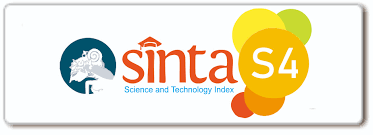Enriching Students’ Multicultural Vocabulary Knowledge through the Language of Advertising on YouTube Commercial Videos
DOI:
https://doi.org/10.33474/multikultural.v8i1.21524Keywords:
advertisement, English for Advertising, vocabulary, YouTube, multiculturalAbstract
One of the most crucial language aspects which the students should master is vocabulary. Students of D4 English for Business and Professional Communication, State Polytechnic of Malang with a restricted vocabulary are likewise limited in their listening, speaking, reading and writing abilities. It is difficult to learn a language without first acknowledging the vocabulary. Because of their restricted vocabularies, the students are unable to converse properly with one another. Eventually, with the help of various YouTube commercial videos, students could possibly work using their smartphones, tablets, or laptops while observing and analyzing the YouTube commercials that they watch. This could be beneficial since audiovisual materials have been proven to be good media to promote students’ fun and active learning. From the above explanation it could be inferred that this present study is aimed at enriching students’ vocabulary knowledge through the language of advertising on YouTube commercial videos. It is a case study. The purpose of the present research is to identify the use of language of advertising on YouTube commercial videos to enrich students’ vocabulary knowledge. The research instruments which will be used are observation, pre-test and post-test. The results of this study are students showed positive perceptions towards the use of YouTube commercial videos to enrich their vocabulary knowledge in English for Advertising class. The study also reveals that the use of YouTube commercial video in teaching and learning English gives positive impact to students’ English vocabulary acquisition and helpful for lecturer in delivering the topic to students.
References
Alpala, C. A. O., & García, W. R. O. (2018). Creating machinima (3D) and real life videos in an ESP classroom. Profile Issues in Teachers Professional Development, 20(1), 41–56. https://doi.org/10.15446/ profile.v20n1.59412.
Azar, A. S. (2012). The Effect of Games on EFL Learners’ Vocabulary Learning Strategies. International Journal of Basic and Applied Science, 1.
B. Aslan and H. Karjaluoto, “Digital advertising around paid spaces, Eadvertising industry’s revenue engine: A review and research agenda,” In Telematics and Informatics, vol. 34, no. 8, pp. 1650–1662, 2017.
Bonsignori, V. (2018). Using films and TV series for ESP teaching: A multimodal perspective. System, 77, 58- 69. https://doi.org/10.1016/j.system.2018.01.005.
Byrne, B. (2004). Relevance theory and the language of advertising, Centre for Language and Communication Studies, Occasional paper No.31, Trinity College, Dublin, Ireland.
Chaika, E. (1982). Language The Seciety Mirror. Rewley Massachussets: New House Publisher Inc.
Ducoffe, Robert H. (1996), "Advertising Value and Advertising on the Web," Journal of Advertising Research, 36 (September/ October), 21-35.
Geng, C. (2017). On the teaching innovation of business English teaching: A study on multimodal communicative competence of ethnic universities. Theory and Practice in Language Studies, 7(4), 322– 326. https://doi.org/10.17507/tpls.0704.11.
Goddard, A. (2001). The Language of Advertising/Angela Goddard. L., NY: Routledge.
Haghirian P, Madlberger M. (2005), Consumer attitude toward advertising via mobile devices - an empirical investigation among Austrian users. proceedings of the European Conference on Information Systems, Regensburg, Germany. 1-13.
Iskandar & Basriana, dkk (2010). Language Styles of Advertising in Harper’s Bazaar Magazine.
Kuiper, K., & Allan, W. S. (2017). Introduction: What is a Language? An Introduction to English Language, 1–24. https://doi.org/10.1057/978-1-137-49688-1_1
McQuail, D. (2010). Mc Quail’s Mass Communication Theory 6th Edition, SAGE publication LTD: Los Angeles.
Miles, M. B., & Huberman, A. M. (1994). Qualitative data analysis: An expanded sourcebook. sage.
Mirabela, A., & Ariana, S. M. (2010). The stylistics of Advertising. Fascicle of Management and Technological Engineering(2), 183-188.
Muliati. (2011). . Improving students’ vocabulary mastery through context clues by synonyms and antonyms at the second year of MTS Syekh Yusuf Sungguminasa Gowa. UIN Alaudin Makassar.
R. E. Kraut and P. Resnick. (2011). Building Successful Online Communities: Evidence-based social design. MIT Press.
Rahmah, A. A., et al. (2021). The use of advertisement in social media to enrich students’ vocabulary. Jurnal Pendidikan Bahasa, DOI: 10.34005/lingua.v17i2
Salem, M. Z. Y. (2016). Factors affecting Consumer Attitudes, Intentions and Behaviors toward SMS Advertising in Palestine. Retrieved from: http://www.indjst.org/index.php/indjst/article/viewFile/80216/67087
Siregar. (2013). The Effect of Using Picture Chart On Students; Vocabulary Mastery of The Grade IX At SMPN 2 Padang Bolak In 2012-2013 Academic Year.
Soukup, P. A. (2014). Looking at, with and through YouTube. Communication Research Trends, 33(3), 3-34. Retrieved from http://search.proquest.com/docview/1566387376?pq-origsite=summon
Utami, F. D., et al. (2019). The Use of Commercial Advertisement to Teach University Students in English for Specific Purposes Context. Lingua Cultura, 13(2), May 2019, 151-159, DOI: 10.21512/lc.v13i2.5297.
Wells, W. (1995). Principle and Practice. United State of America : A Dulmen and Schuster Company.
Wibowo, H., & Syarifah, U. L. (2018). the Implementation of Go Fish Game in Improving Students’ Vocabulary. Lingua, 1(02), 11–20. https://doi.org/10.34005/lingua.v1i02.399
Downloads
Published
Issue
Section
License
Copyright (c) 2024 Zubaidi Zubaidi, Fitrotul Maulidiyah, Ririn Pratiwi Suharto, Aulia Nourma Putri Putri

This work is licensed under a Creative Commons Attribution 4.0 International License.
Jurnal PENDIDIKAN MULTIKULTURAL yang diterbitkan oleh Doktor PAI Multikultural Program Pascasarjana Universitas Islam Malang menerapkan ketentuan Hak Cipta dan Lisensi dibawah Creative Commons Attribution 4.0 International License.

This work is licensed under a Creative Commons Attribution 4.0 International License.

.png)


_-_Copy1.jpg)







